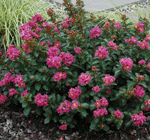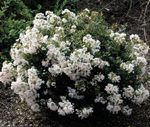Popular Crape Myrtles Available in Smaller Sizes
go.ncsu.edu/readext?234305
en Español / em Português
El inglés es el idioma de control de esta página. En la medida en que haya algún conflicto entre la traducción al inglés y la traducción, el inglés prevalece.
Al hacer clic en el enlace de traducción se activa un servicio de traducción gratuito para convertir la página al español. Al igual que con cualquier traducción por Internet, la conversión no es sensible al contexto y puede que no traduzca el texto en su significado original. NC State Extension no garantiza la exactitud del texto traducido. Por favor, tenga en cuenta que algunas aplicaciones y/o servicios pueden no funcionar como se espera cuando se traducen.
Português
Inglês é o idioma de controle desta página. Na medida que haja algum conflito entre o texto original em Inglês e a tradução, o Inglês prevalece.
Ao clicar no link de tradução, um serviço gratuito de tradução será ativado para converter a página para o Português. Como em qualquer tradução pela internet, a conversão não é sensivel ao contexto e pode não ocorrer a tradução para o significado orginal. O serviço de Extensão da Carolina do Norte (NC State Extension) não garante a exatidão do texto traduzido. Por favor, observe que algumas funções ou serviços podem não funcionar como esperado após a tradução.
English
English is the controlling language of this page. To the extent there is any conflict between the English text and the translation, English controls.
Clicking on the translation link activates a free translation service to convert the page to Spanish. As with any Internet translation, the conversion is not context-sensitive and may not translate the text to its original meaning. NC State Extension does not guarantee the accuracy of the translated text. Please note that some applications and/or services may not function as expected when translated.
Collapse ▲
‘Pocomoke’
Robert E. Lyons ©
Crape myrtles (Lagerstroemia species) are popular mainstays of the Southern garden. Their long bloom period during late summer provides beauty and landscape value when many other plants have succumbed to hot weather. Some people spell the common name with an “e” because the blooms look like crepe paper or the fabric crepe de Chine.
Both Lagerstroemia indica and L. fauriei, and hybrids between these species, produce plants that are used as large shrubs or small trees, growing from 15 to 30 feet tall. With the introduction of L. subcostata, breeding programs began developing dwarf cultivars.

Snow Dazzle™
JC Raulston Arboretum ©
The National Arboretum introduced a series of crape myrtle cultivars that were named for Indian tribes. While most of these grow to tree size, two smaller selections, ‘Chicksaw’ and ‘Pokomoke,’ grow 2 to 3 feet in height. There are currently several other active breeding programs across the country developing compact crape myrtles. New introductions include cultivars that are considered groundcover. The prostrate growth of ‘Rosey Carpet’ is 4 to 8 inches in height.
A variety of colors including white, red, pink and purple are available in compact forms. ‘Tightwad Red’ is generally considered to be the best red dwarf but there are several others, such as Cherry Dazzle™. Others in the Dazzle series include Ruby Dazzle™ and Snow Dazzle™.
Most dwarf crepe myrtles will flower for many weeks during summer. They can be grown as individual specimen plants in the front of the perennial or shrub border, or massed to achieve a groundcover effect. Since they are deciduous with limited winter interest, some gardeners place them in front of evergreens. Like standard crape myrtles, the dwarf forms are reliably cold hardy to zone 7a, and to 6b with some protection. ‘Rosey Carpet’ is rated as winter hardy to 10 degrees. It could be grown as a hanging basket in the western piedmont or mountains but would have to be brought inside over the winter.
Most dwarf crapes are resistant to powdery mildew.


